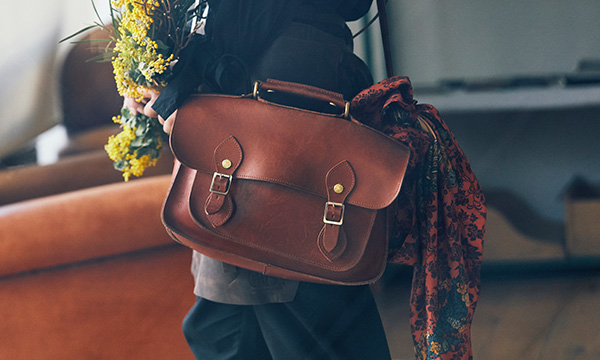No.006
Things that change and those unchanging. Masterpieces the creative director loves.
BEAMS creative directorMr. Tatsuya Nakamura
Memories of Glenroyal updated to cross eras.
The clutch bag that bewitched Mr. Nakamura (the boss of Beams clothing department) since the start of his days as a buyer. What brought about the re-release of this item now, after some twenty years have passed? We asked Mr. Nakamura about his memories and what he’s still passionate about.
Belief in continuing along a single path.
━Tell us about the work of a creative director and what motivates you.
I direct every aspect from the product planning and buying processes to creating a catalog and an image for dress clothing. I have many years of experience as a buyer, and I feel like I am now continuing my work from the vantage point of a watch tower. I have a good overview.
Most people after gaining a certain amount of experience end up in some kind of management position after leaving their former work path. I am able to make use of what I have done over the years to help me to do work that makes the site quite close to the actual store; this might be my biggest motivation to do this kind of work.
I have always liked the actual point of sale, so no matter how busy I am or how little time there is, I make sure that I go into the store at least once a day. There are things that you cannot tell solely from the numbers, such as how are items actually being sold, or how should they be presented, which is esential; you have got to be able to gauge the effect of what you do. The more stores you have, the scale increases, which is when it is even more critical to make sure you know that what you are doing is right.

To communicate the attraction of clothing to people outside the industry
━What motivates you to continue writing your blog, Elements of Style?
I post a new blog about once a week right now, but there are times that I have trouble coming up with a topic. What I think about blogs is that there are a lot of people out there just writing them for their own satisfaction. Putting statements out there with no regard for the readers is not what I consider to be a good practice, and I don’t think bloggers think deeply enough about this. I try to write Elements of Style in great detail so that it’s both easy for readers to understand and it doesn’t become a kind of one-way communication.
Surprisingly, there aren’t many people doing blogs in this way. If you read the top-ranking bloggers’ articles, there are some that deal with content that is no more worthwhile of a blog than a Facebook entry. That’s the reason that I started to think that I wanted to create something that is more of a work to be read. At first, I made my blogs so long that now I feel like I can’t go back to making them shorter (he laughs).
These are some of the reasons that I shoot for making entries that easy enough to understand for those outside the fashion industry. That’s why I avoid using any terminology only those in the industry would understand. I always try to write from a perspective that will communicate the appeal of the clothing industry to anyone.
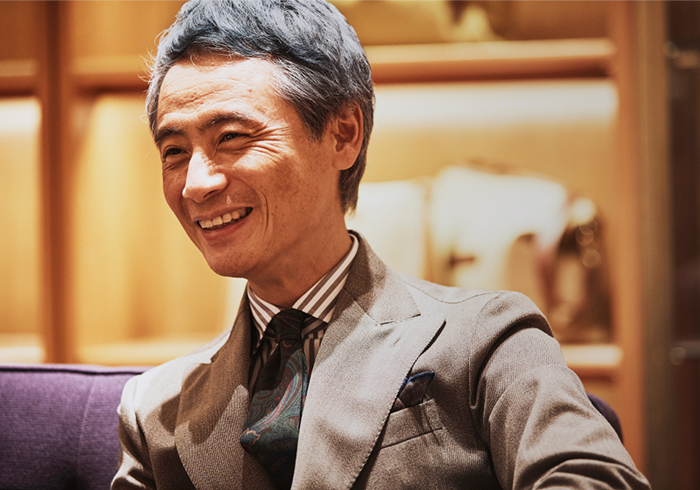
Integral sense of “this is how to make it better”
━Is there something not related to clothing that inspires you?
I like to eat delicious food. For something to be delicious, the element of service is just as critical as the taste of the food. If you receive poor service, you end up feeling something was negative about your experience, no matter how good the food tasted. Among my many visits to different restaurants, there are always those where I think there is just a little more the servers could work on to get to that point where they take that one last step and make their establishment even better with regard to the service and to the food. And it’s usually just a very little thing, you know. I don’t know whether it’s that they aren’t aware of where the “just a little more effort” should be made, or that they are aware of it but for some reason just don’t do it. It could be that they may be satisfied with how things are.
I could say the same thing about what I do with clothing. No item exists that will be 100% fulfilling to all people, but I never compromise when I feel, “this is how to make it better.” In the clothing industry, there is a culture of “jumping on the bandwagon,” but it’s not part of my culture at all (he laughs). I try to swallow my pride concerning those points that I will never be able to achieve even if I demand them, but I am probably regarded as a difficult man to please when it comes to those requests that could get me closer to what I want if the technology is available. The truth is, that those manufacturers who quit at that point don’t really grow. I have been yelled at innumerable times, and been told “It can’t be done!” Many of the manufacturers who respond to my suggestions for “this is how to make it better” and who put in the hours to make a product together with me get greater results and are in business for many more years.
Quality in craftsmanship unchanged for 20 years
━How long have you had the Glenroyal that you love to use?
I bought mine about 20 years ago, when I was still a rookie buyer. It’s a briefcase that was available in the collection at that time. Made from thick bridle leather, it’s thicker than the leather briefcases are made from now, and has a lot of years on it. The clutch bag was a lot less popular then than it is now, so it didn’t sell very well (he laughs). But when I took it on trips to Italy, I was often complimented by Italians. I’ve had a lot of use out of it, but the bridle leather shows none of it. I sewed the areas where the thread had worked loose on occasion, but never have the threads broken. The way that you use the clasps is very much that of a British bag, and they continue to look sharp even today. If I were to use it now, the horizontal length of it would be a bit big, but I have kept it all this time and am unwilling to get rid of it.
Honestly, Glenroyal did not have much of a color to it in the old days (he laughs). Truly, my impression was that of a very serious Scottish bag maker. The craftsmanship demonstrtated solid quality and sturdiness of a very high standard, but it didn’t have much of a commanding presence. Next on my horizon came Italian products, which were all I could see, and I drifted away from British things. But recently, I am returning to the classics, and I am now able to sense a new freshness in the British atmosphere that has been around since olden days. As British brand firms close up shop, Glenroyal is still crafting products in the same way it has always done, and has a huge archive. The fact that they have resized their items to meet today’s sizing needs and are flexible in taking special orders is also wonderful.

Old British-ness essential to modern style
━So that is the background that gave rise to taking special orders.
Since I had this briefcase, I thought that they could create an ideal shape by using it as a base. British manufacturers also don’t really throw away old things, so the patterns and other things were also still available. The size was a little large horizontally, so they resized it and updated the design to suit modern sensibilities. The key point was using the brass buckles that had been used in England for centuries. Another manufacturer had been making a product design with these type of brass buckles. The other important thing was to have a type that had a two-way handle because the arm you use to carry the clutch bag sometimes gets tired.
The pendulum of trend is now swinging back to the classics, and a lot of people are wearing Italian clothes. What would be ideal now is to purposely mix a British bag like this with Italian-style clothing. Dressing your entire body in sexy Italian styles now appears a little dated. Even so, you don’t want to pull it all together in a kind of English country style. But I think you can wear a Barbour or a trenchcoat with Italian-style clothes, and pull it off in an overall coordinated look. The suit I am wearing today is Neapolitan, but the fabric used is the ancient Cavert fabric born in Britain. Rather than coordinating the whole body in a spicy Italian style, we neutralize it with classic British items, which I now think is the correct direction for current styling.
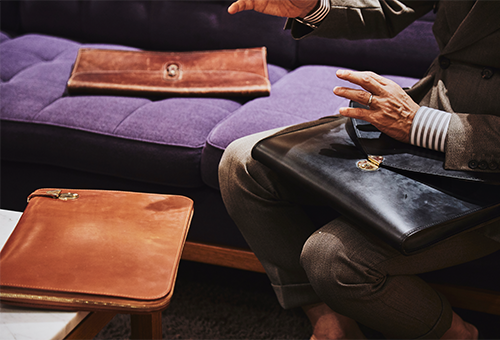
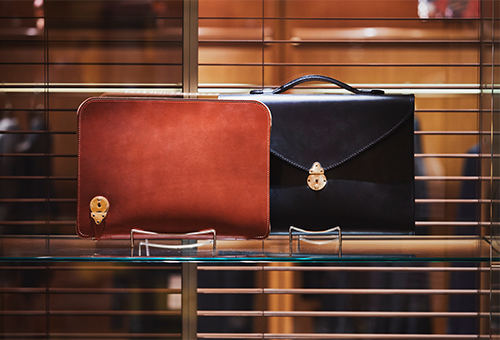
Choose an item that does not fade away.
━What are you looking for when you choose an item?
There are some things you want to use for a long time. So when I choose, for example, leather accessories, I look not only at the surface, but at what kind of material is used for the lining. Unlike the women’s, men’s items are often used for a long time, so the important point is to make sure they don’t look shabby even when they start to wear after a certain amount of use. That is where a significant difference shows up between items that are made without enough care and items that are made properly. Cheap leather is an example of what becomes tatty with passing time, but shoes made of good leather get better and better if kept in good condition. Belts are the same way. I don’t judge by a quick glance at the appearance, but instead choose items by predicting to a certain degree how I expect they would change as I use them. I have a strong affinity for different eras, and have a lot of British items in particular that I have used for many years but are now at home resting in storage because I am not using them. Cashmere scarves, knits and even shoes that are outdated: I know that I will absolutely use all of these at some point.
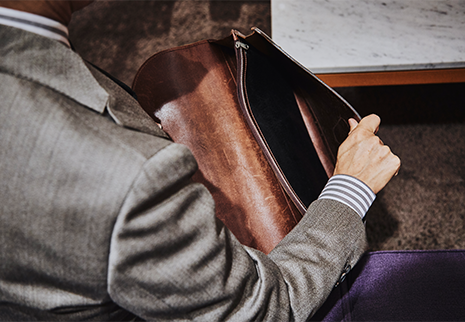
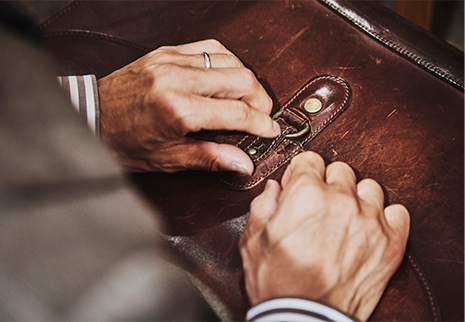
Mission to inherit old culture while focused on the present
━Finally, tell us your outlook for the future.
I don’t know whether this is my outlook, but I do feel that I have a role in it. In this industry, there are few like me who continue to do classic and basic styles. Right in the middle of exercising a different style, people will switch to another mode or become casual. I think the only people who consistently and continuously stick to one style are myself and a few others who are older than me. So I feel like my role is to continue to inherit the responsibility of being consistent. First of all, I have to convey that the company is moving in reverse. Even though they may know much about things of the past, people whose role it is to inherit the old are more apt to fail to see the present. I try to talk to people about the present by interspersing stories of the past, such as “The 1980’s were like X, but now it’s like Y,” or “in the 90’s the British style had trends like that, but if we’re doing it now, we should style it like this.” We’ve got to absorb items that are fashionable now as we inherit the old, which defines the role I have to play in the future of my company and the industry.
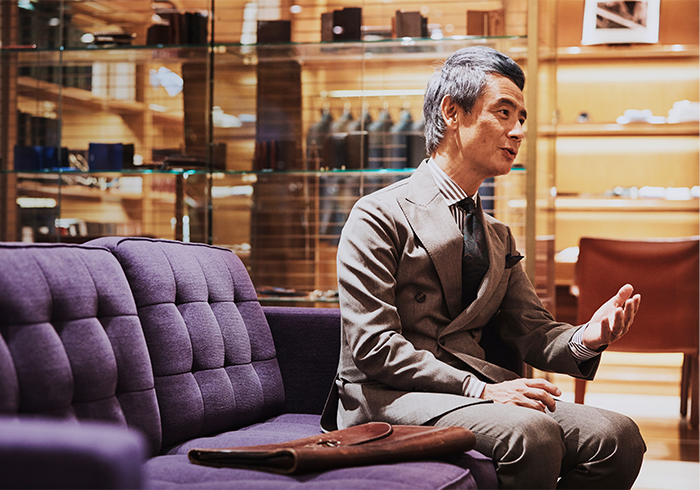
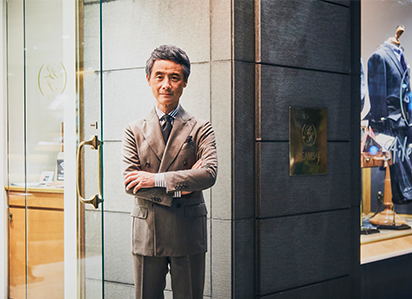
photoKenichirou Higa textK-suke Matsuda
BEAMS creative director
Mr. Tatsuya Nakamura

Born in 1963. Hails from Niigata City. Tatsuya’s mother’s parents were in the fabric trade, and his paternal grandfather was born among shoe craftsmen. While a student at university, Tatsuya worked part-time at BEAMS and joined the company upon graduation. He was assigned to the Shibuya store and later became store manager and buyer for Beams F, and now directs the clothing department at Beams. His deep knowledge earned him broad support, and he is also involved in editing a variety of style books. Tatsuya’s official blog, “ELEMENTS OF STYLE” is a favorite of many people in the industry both in Japan and abroad.
photoKenichirou Higa textK-suke Matsuda

